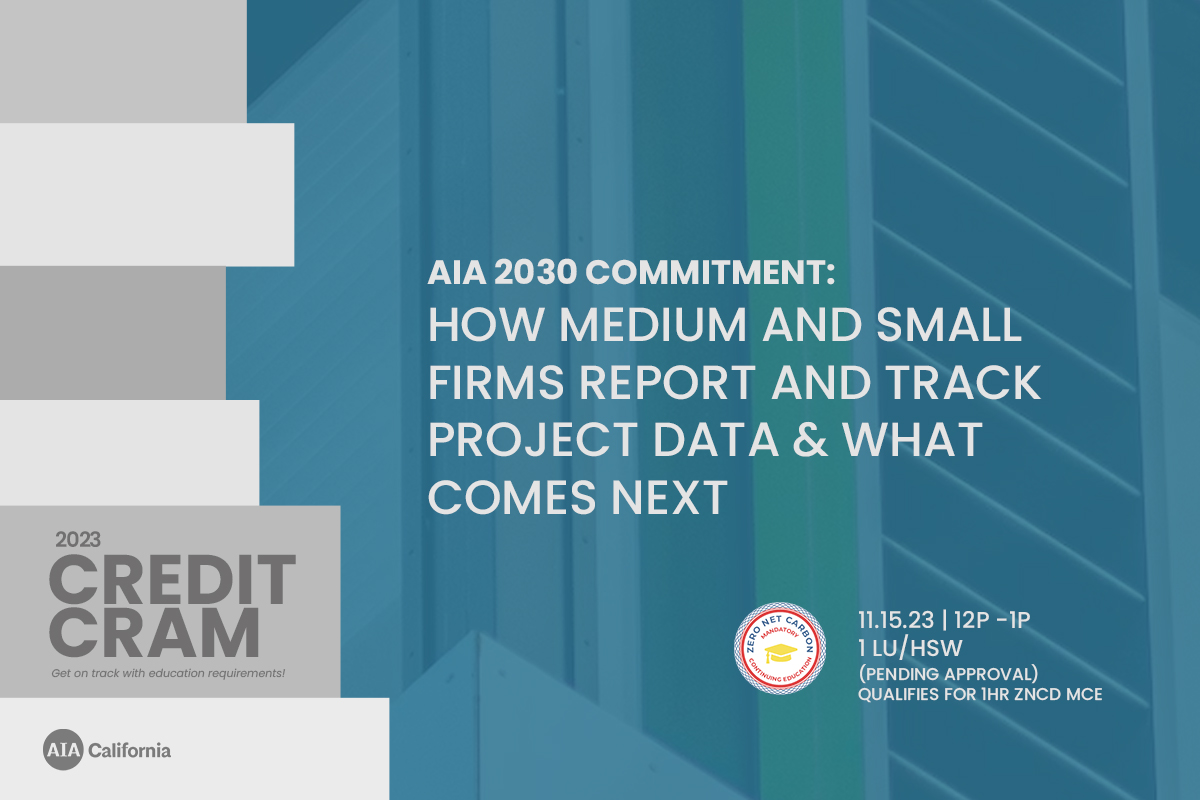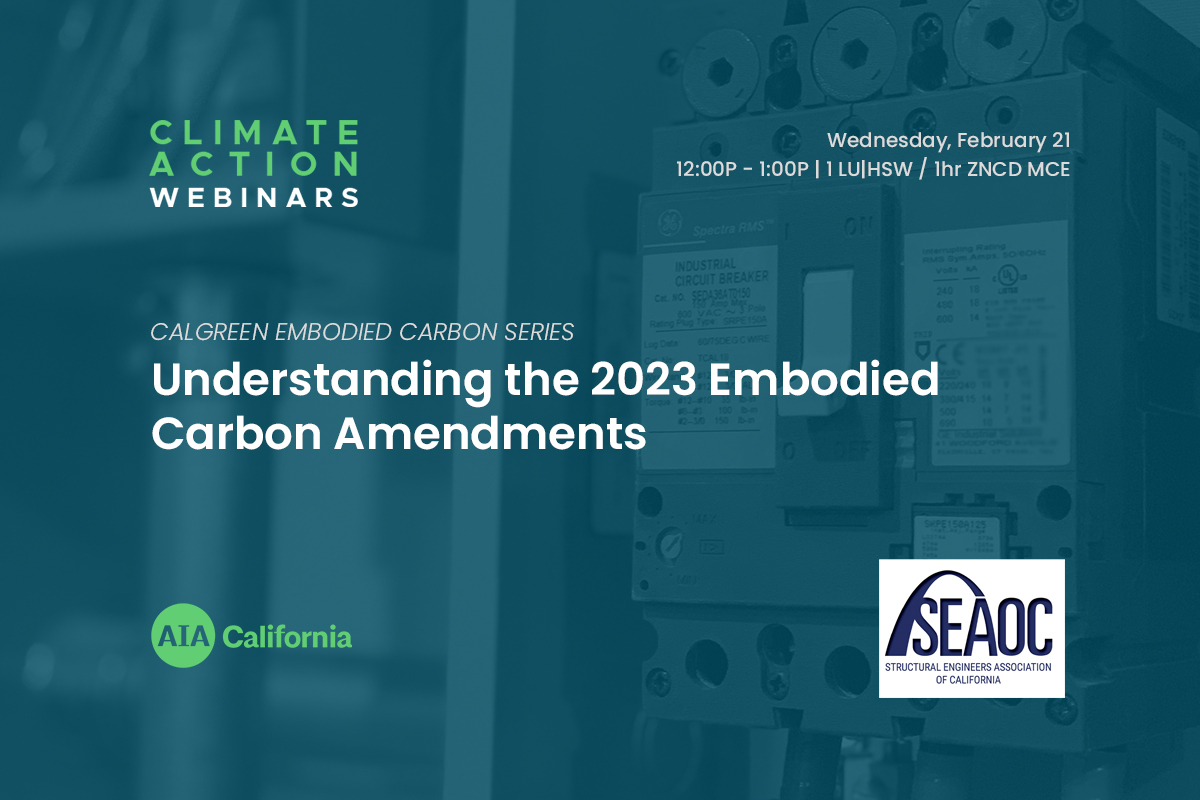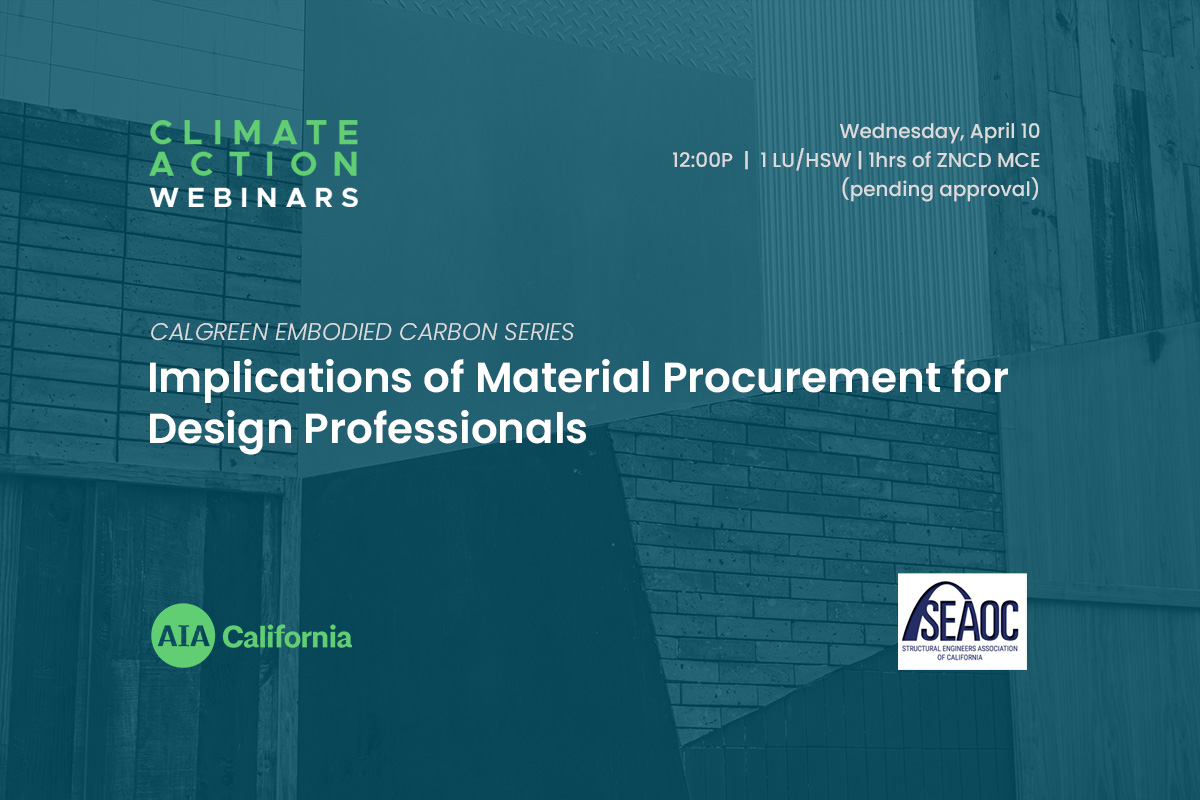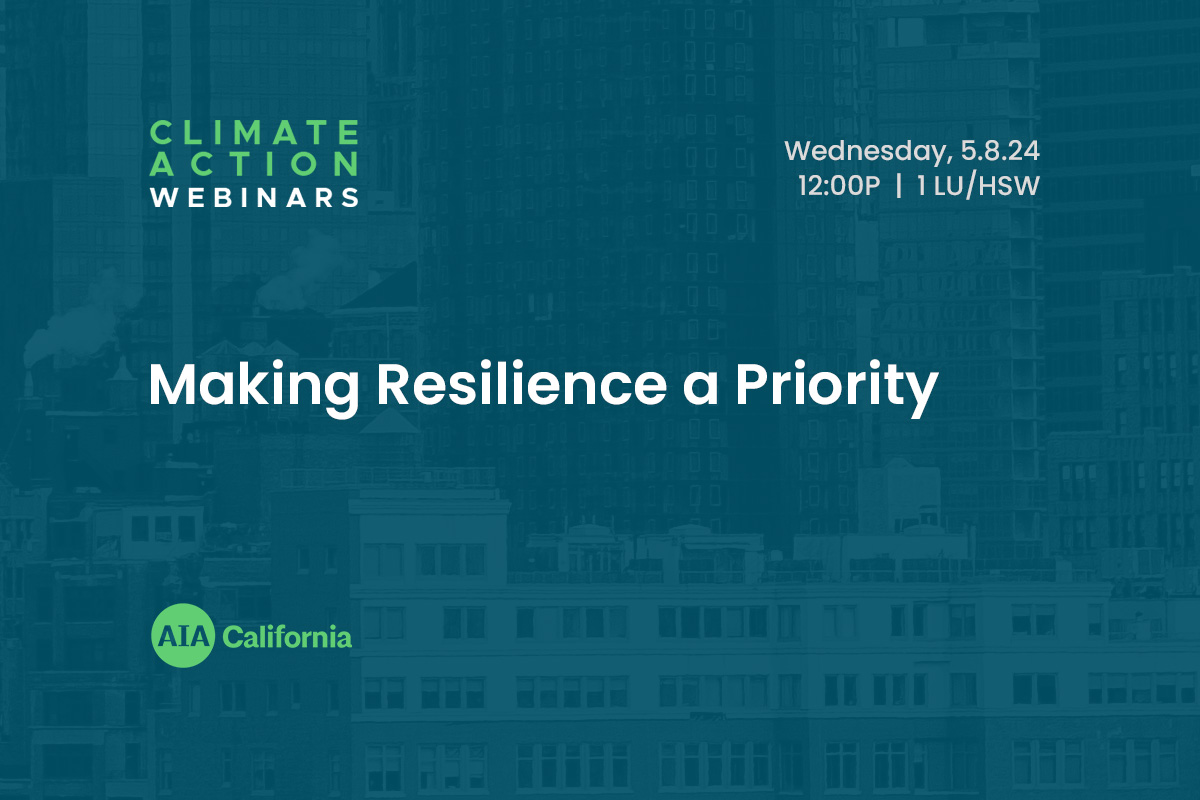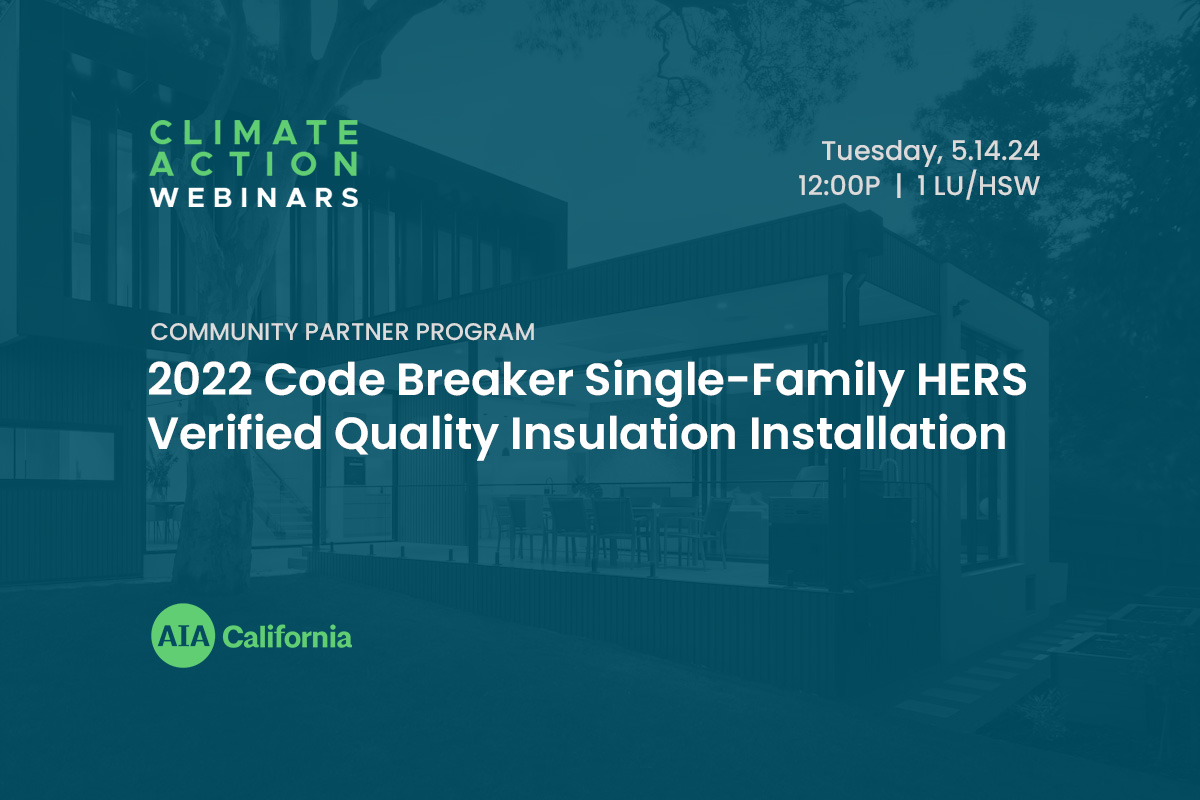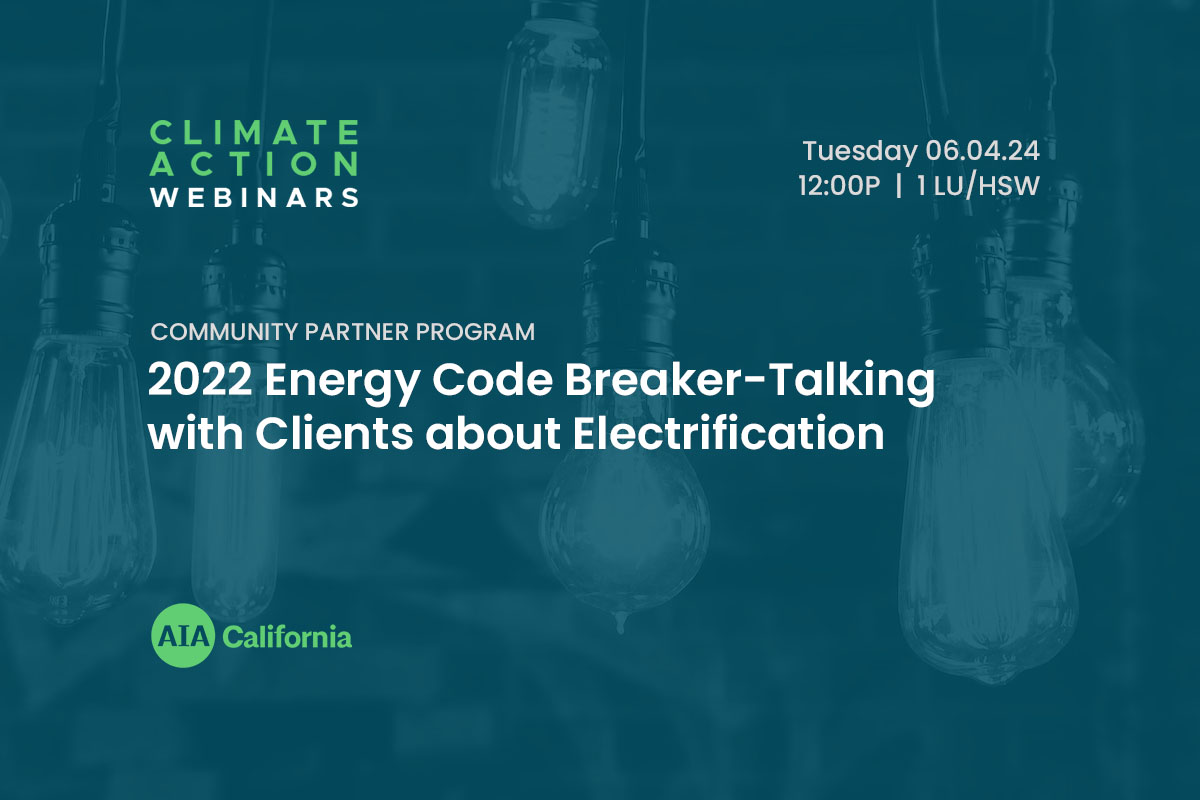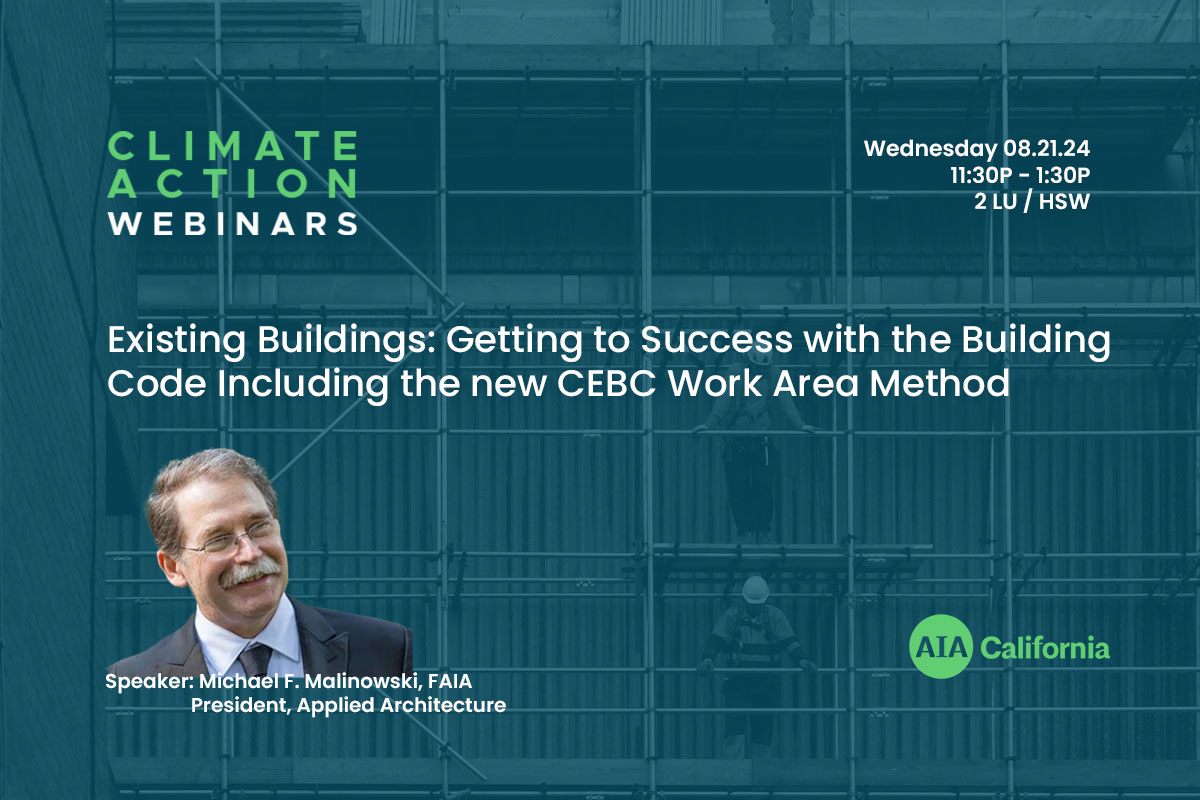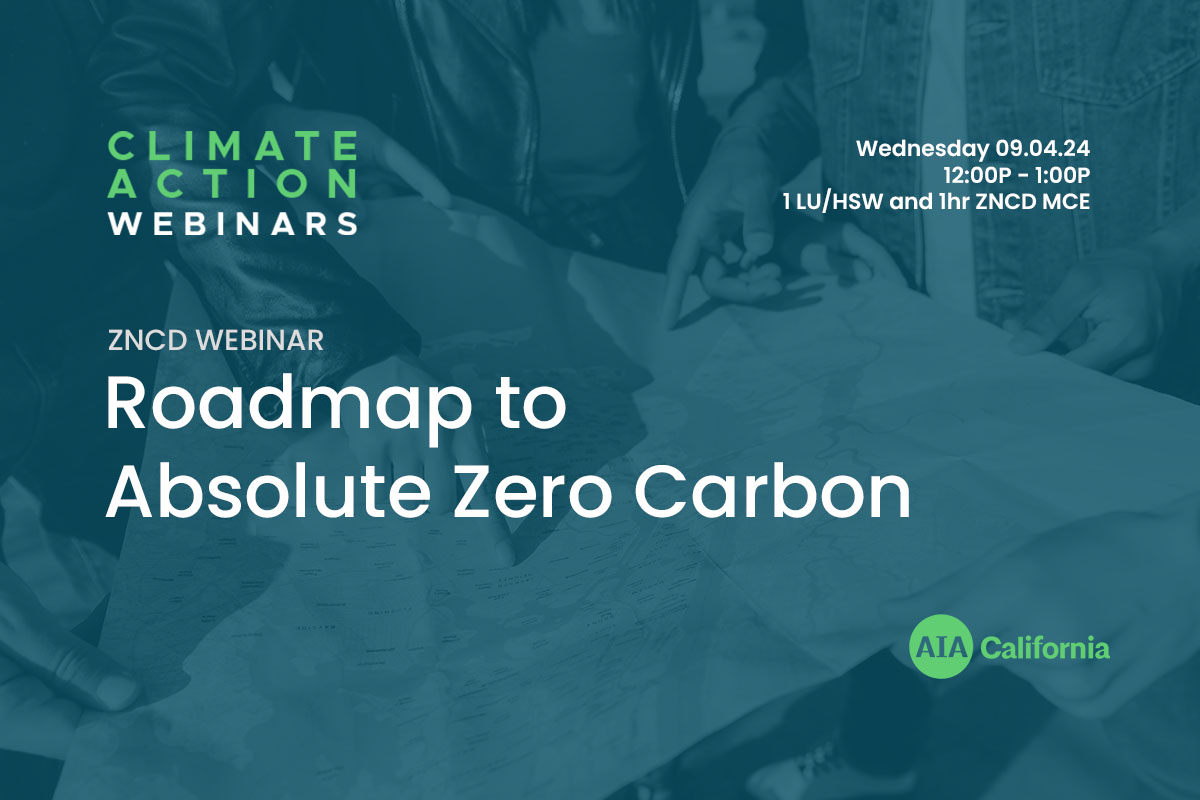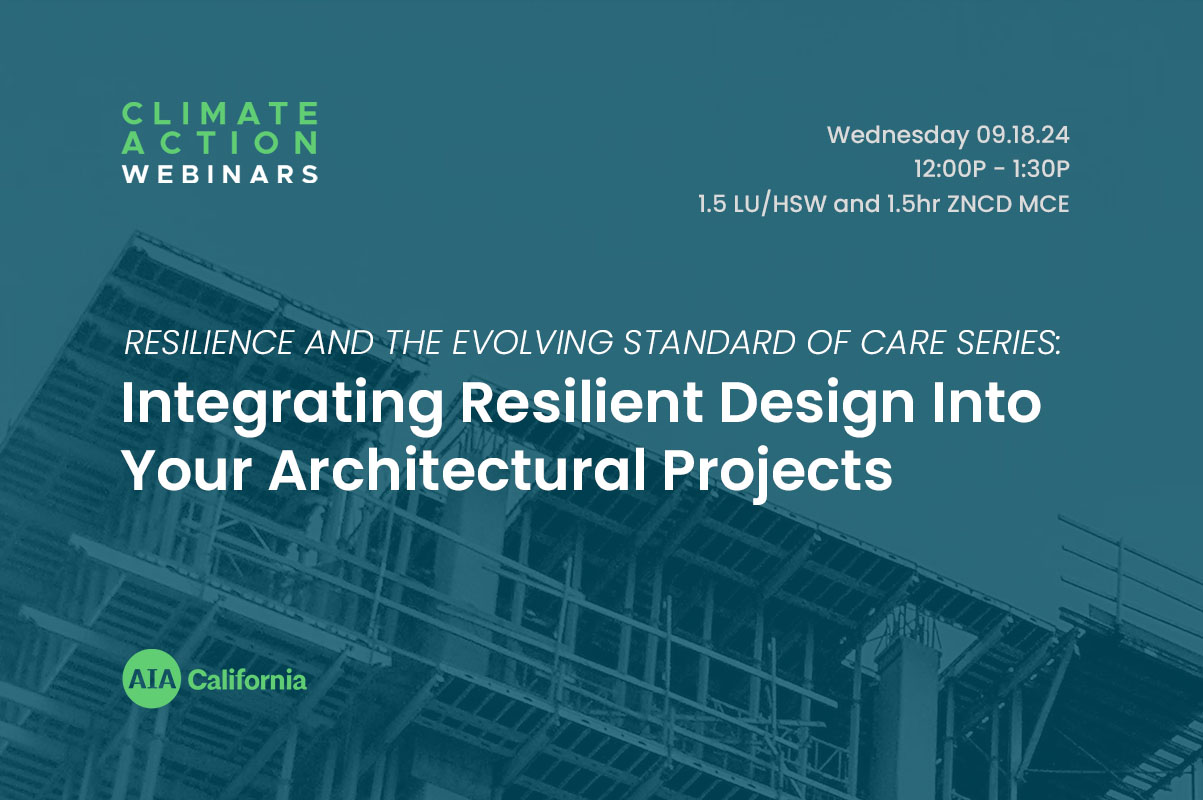Credit Cram | AIA 2030 Commitment: How Medium and Small Firms Report and Track Project Data & What Comes Next
VirtualSome architects are under the impression that the 2030 Commitment is only for large firms and that reporting is too difficult for small to medium-sized firms. To dispel that myth, this program will focus on two modest-sized firms that participate in the 2030 Commitment. Browning-Day is a medium-sized, regional firm in Indianapolis, Indiana. Feldman Architecture is a small firm in San Francisco and one of the 19 firms that achieved a portfolio-wide reduction of 80% in 2022.Join Daniel Overbey, AIA, Director of Sustainability at Browning Day and Ben Welty, Sustainability Manager at Feldman Architecture, as they discuss the AIA 2030 Commitment’s Design Data Exchange (DDx) and outline each firm's lessons learned and best practices for setting project performance targets and subsequent portfolio-wide reporting for the DDx.Moderator: Keith Hempel, FAIA | Principal, Chief Design Officer, LPA Design Studios Speakers: Ben Welty, AIA | Senior Associate, Architect, Sustainability Manager, Feldman Architecture Daniel Overbey, AIA LEED Fellow, WELL AP | Director of Sustainability and Associate Principal at Browning Day; Assistant Professor at Ball State UniversityWhy it's important:The AIA 2030 Commitment is a commitment for firms to reduce energy use and carbon emissions. These reductions help better our environment and the planet, and also help change firm and practice culture to be aware of their impact on the environment and people who live in it. Encouraging small and medium sized firms to sign the commitment can lead to cultural changes and promote the health, safety and welfare of the environment and the public due to carbon reductions through higher performing buildings. .elementor-widget-tabs.elementor-tabs-view-vertical .elementor-tabs-wrapper{width:25%;flex-shrink:0}.elementor-widget-tabs.elementor-tabs-view-vertical .elementor-tab-desktop-title.elementor-active{border-right-style:none}.elementor-widget-tabs.elementor-tabs-view-vertical .elementor-tab-desktop-title.elementor-active:after,.elementor-widget-tabs.elementor-tabs-view-vertical .elementor-tab-desktop-title.elementor-active:before{height:999em;width:0;right:0;border-right-style:solid}.elementor-widget-tabs.elementor-tabs-view-vertical .elementor-tab-desktop-title.elementor-active:before{top:0;transform:translateY(-100%)}.elementor-widget-tabs.elementor-tabs-view-vertical .elementor-tab-desktop-title.elementor-active:after{top:100%}.elementor-widget-tabs.elementor-tabs-view-horizontal .elementor-tab-desktop-title{display:table-cell}.elementor-widget-tabs.elementor-tabs-view-horizontal .elementor-tab-desktop-title.elementor-active{border-bottom-style:none}.elementor-widget-tabs.elementor-tabs-view-horizontal .elementor-tab-desktop-title.elementor-active:after,.elementor-widget-tabs.elementor-tabs-view-horizontal .elementor-tab-desktop-title.elementor-active:before{bottom:0;height:0;width:999em;border-bottom-style:solid}.elementor-widget-tabs.elementor-tabs-view-horizontal .elementor-tab-desktop-title.elementor-active:before{right:100%}.elementor-widget-tabs.elementor-tabs-view-horizontal .elementor-tab-desktop-title.elementor-active:after{left:100%}.elementor-widget-tabs .elementor-tab-content,.elementor-widget-tabs .elementor-tab-title,.elementor-widget-tabs .elementor-tab-title:after,.elementor-widget-tabs .elementor-tab-title:before,.elementor-widget-tabs .elementor-tabs-content-wrapper{border:1px #d5d8dc}.elementor-widget-tabs .elementor-tabs{text-align:left}.elementor-widget-tabs .elementor-tabs-wrapper{overflow:hidden}.elementor-widget-tabs .elementor-tab-title{cursor:pointer;outline:var(--focus-outline,none)}.elementor-widget-tabs .elementor-tab-desktop-title{position:relative;padding:20px 25px;font-weight:700;line-height:1;border:solid transparent}.elementor-widget-tabs .elementor-tab-desktop-title.elementor-active{border-color:#d5d8dc}.elementor-widget-tabs .elementor-tab-desktop-title.elementor-active:after,.elementor-widget-tabs .elementor-tab-desktop-title.elementor-active:before{display:block;content:"";position:absolute}.elementor-widget-tabs .elementor-tab-desktop-title:focus-visible{border:1px solid #000}.elementor-widget-tabs .elementor-tab-mobile-title{padding:10px;cursor:pointer}.elementor-widget-tabs .elementor-tab-content{padding:20px;display:none}@media (max-width:767px){.elementor-tabs .elementor-tab-content,.elementor-tabs .elementor-tab-title{border-style:solid solid none}.elementor-tabs .elementor-tabs-wrapper{display:none}.elementor-tabs .elementor-tabs-content-wrapper{border-bottom-style:solid}.elementor-tabs .elementor-tab-content{padding:10px}}@media (min-width:768px){.elementor-widget-tabs.elementor-tabs-view-vertical .elementor-tabs{display:flex}.elementor-widget-tabs.elementor-tabs-view-vertical .elementor-tabs-wrapper{flex-direction:column}.elementor-widget-tabs.elementor-tabs-view-vertical .elementor-tabs-content-wrapper{flex-grow:1;border-style:solid solid solid none}.elementor-widget-tabs.elementor-tabs-view-horizontal .elementor-tab-content{border-style:none solid solid}.elementor-widget-tabs.elementor-tabs-alignment-center .elementor-tabs-wrapper,.elementor-widget-tabs.elementor-tabs-alignment-end .elementor-tabs-wrapper,.elementor-widget-tabs.elementor-tabs-alignment-stretch .elementor-tabs-wrapper{display:flex}.elementor-widget-tabs.elementor-tabs-alignment-center .elementor-tabs-wrapper{justify-content:center}.elementor-widget-tabs.elementor-tabs-alignment-end .elementor-tabs-wrapper{justify-content:flex-end}.elementor-widget-tabs.elementor-tabs-alignment-stretch.elementor-tabs-view-horizontal .elementor-tab-title{width:100%}.elementor-widget-tabs.elementor-tabs-alignment-stretch.elementor-tabs-view-vertical .elementor-tab-title{height:100%}.elementor-tabs .elementor-tab-mobile-title{display:none}} Additional Resources Additional Resources Learning Objectives + Browning Day Presentation_Medium and Small Firm 2030 Commitment

